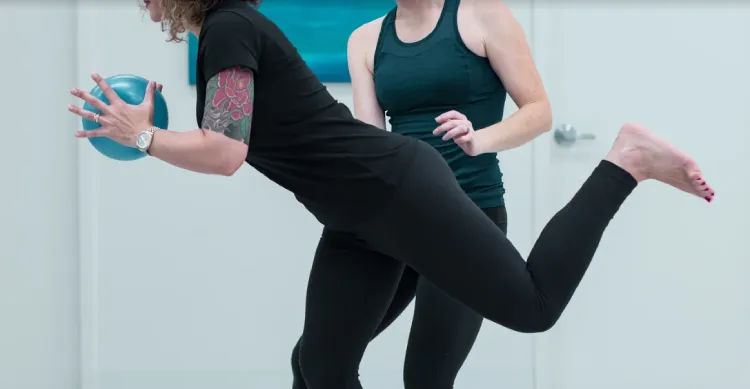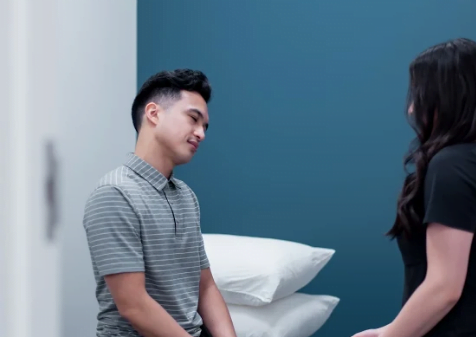Vestibular rehabilitation, a specialized form of physiotherapy, has been instrumental in helping patients overcome balance and dizziness issues.
This therapeutic approach focuses on the vestibular system, a part of the inner ear and brain that controls balance and eye movements. When this system is impaired, it can lead to various vestibular disorders causing symptoms like vertigo, dizziness, visual disturbance, and imbalance.
Understanding Vestibular Disorders
Vestibular disorders are medical conditions affecting the balance and spatial orientation systems of the body. These disorders stem from issues within the vestibular system, which includes parts of the inner ear and brain that process sensory information related to maintaining balance and eye movements. Here are some of the most common vestibular disorders:
- Benign Paroxysmal Positional Vertigo (BPPV): This is the most common vestibular disorder. BPPV is characterized by sudden episodes of vertigo—a spinning sensation—when the position of the head is changed. This happens due to the dislodgement of tiny calcium carbonate crystals in the inner ear.
- Vestibular Neuritis and Labyrinthitis: These are inflammations caused by a viral infection, which result in dizziness and loss of balance. Vestibular neuritis affects the balance nerves in the inner ear, while labyrinthitis affects both the balance and hearing organs in the inner ear.
- Meniere’s Disease: This disorder involves an excessive buildup of fluid in the inner ear. Symptoms include episodic vertigo, tinnitus (ringing in the ear), a feeling of fullness or pressure in the ear, and fluctuating hearing loss.
- Vestibular Migraine: While not entirely understood, vestibular migraines are believed to be a type of neurological disease characterized by recurrent dizziness in people who have a history of migraine symptoms.
- Bilateral Vestibulopathy: This is a reduction in, or loss of, inner ear balance function in both ears, which can lead to difficulty maintaining balance, especially in the dark or on uneven surfaces, and unsteadiness.
It’s important to note that these vestibular disorders can significantly impact a person’s life, causing problems with functioning in daily activities, work, and socializing.
RELATED READING: Are Vertigo and Dizziness the Same Thing?

Vestibular Rehabilitation: An Effective Solution
Vestibular physiotherapy aims to alleviate these problems by promoting central nervous system compensation for inner ear deficits. The therapy involves a customized set of exercises that helps the other senses compensate for the dysfunctional vestibular system.
Common exercises include habituation, gaze stabilization, and balance training.
- Habituation Exercises: These are designed for patients who experience dizziness from specific movements or visual stimuli. These exercises involve repeated exposure to the trigger to reduce the intensity of the response over time.
- Gaze Stabilization Exercises: These help improve control of eye movements so vision can be clear during head movement. This type of exercise is beneficial for patients who report problems seeing clearly because their visual world appears to bounce or jump around.
- Balance Training: These exercises aim to improve steadiness so that daily activities can be performed safely and efficiently. This may involve static exercises (like standing on one foot), dynamic exercises (like walking with head turns), and dual-task exercises where balance tasks are combined with cognitive tasks.
The Benefits of Vestibular Physiotherapy
Vestibular Rehabilitation Therapy is considered an essential element in managing and treating balance and dizziness issues.
That’s because it offers a variety of benefits:
- Alleviates Vertigo & Dizziness: Studies indicate that supervised vestibular rehabilitation can be highly effective in treating subjective dizziness in patients with chronic peripheral vestibular disorders1.
- Improves Balance & Gait: Exercises are aimed at improving balance, reducing falls, and improving the patient’s gait. This directly leads to an enhanced ability to perform daily activities.
- Enhances Gaze Stability: This means improving the ability to focus on objects even while the head is moving (e.g. sports) or when the world is moving around you (e.g. driving).
- Adapts & Compensates for Vestibular Loss: The therapy works by promoting the brain’s ability to adapt to the loss of vestibular inputs and compensate for them through the use of the other balance systems in the body (visual and somatosensory systems).
- Customizable Treatment: Our vestibular rehab programs are tailored to meet individual needs based on their specific symptoms and conditions. This ensures more targeted and effective treatment outcomes.

Practical Tips for Managing Symptoms
For those struggling with balance or dizziness issues, here are some practical tips:
- Stay Active: Gentle activities like walking can help improve balance and reduce dizziness.
- Hydrate: Dehydration can exacerbate feelings of dizziness.
- Avoid Rapid Movements: Quick changes in position, particularly from lying down to standing, can provoke dizziness.
- Rest and Relax: Stress and fatigue can worsen vestibular disorder symptoms.
- Good nutrition: certain foods and beverages (such as caffeine) may worsen anxiety and migraines which may be underlying vestibular conditions. Consult a Naturopathic Doctor or Dietician to investigate your triggers and make necessary adjustments to your diet.
Seek Professional Help
If you’re experiencing persistent dizziness or balance problems, it’s crucial to seek help from trained vestibular physiotherapists. At Reformotiv, our team has years of experience treating vestibular issues in patients across Vancouver BC and the Greater Vancouver area. Remember, with proper diagnosis and therapy, you can manage or even overcome vestibular disorders.
Vestibular Rehabilitation is more than just a treatment; it’s a journey towards reclaiming your balance and restoring your quality of life. Trust in the process, keep faith in your resilience, and take the first step towards recovery today.

